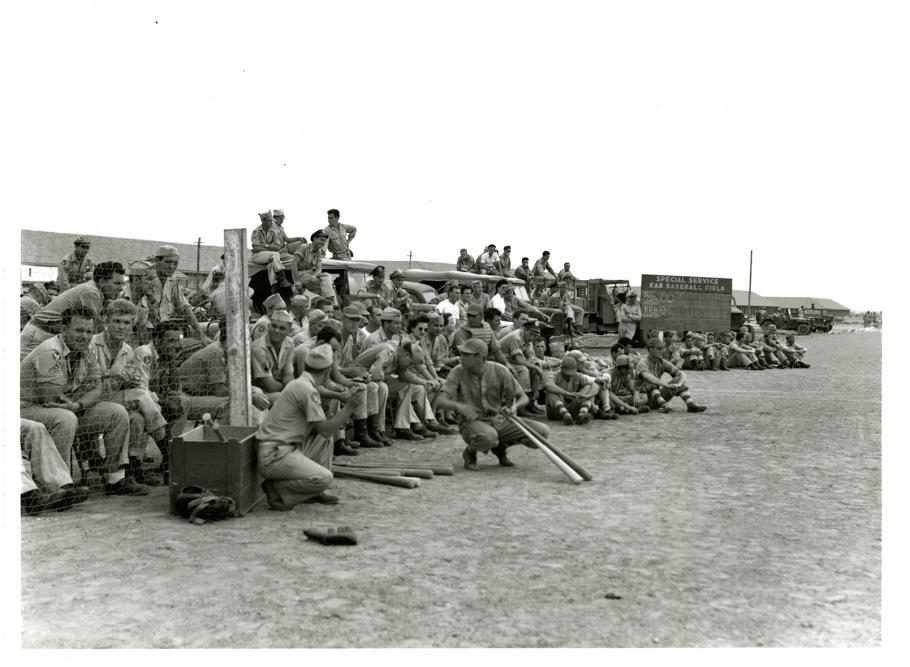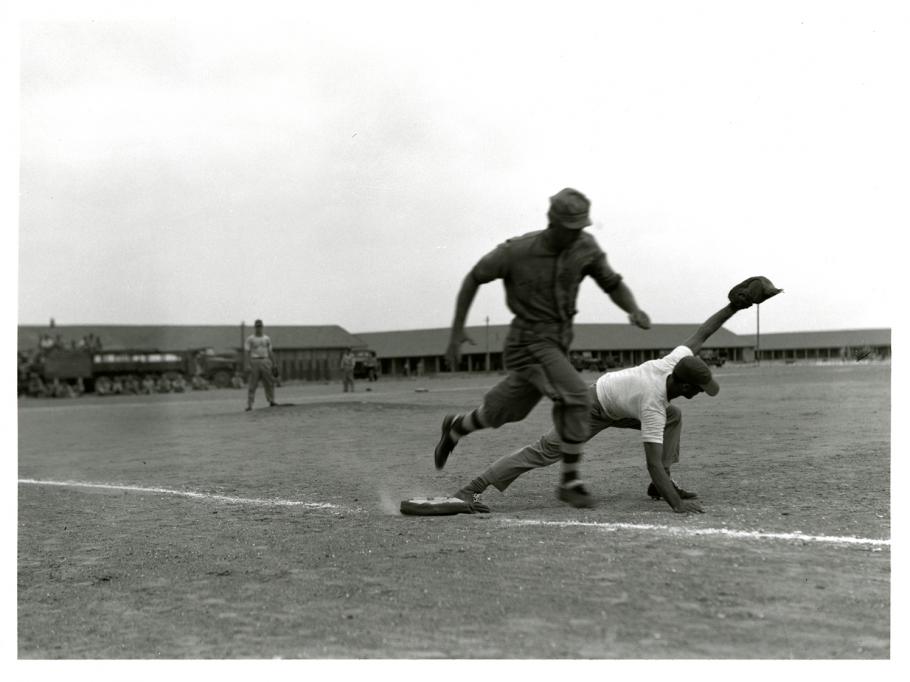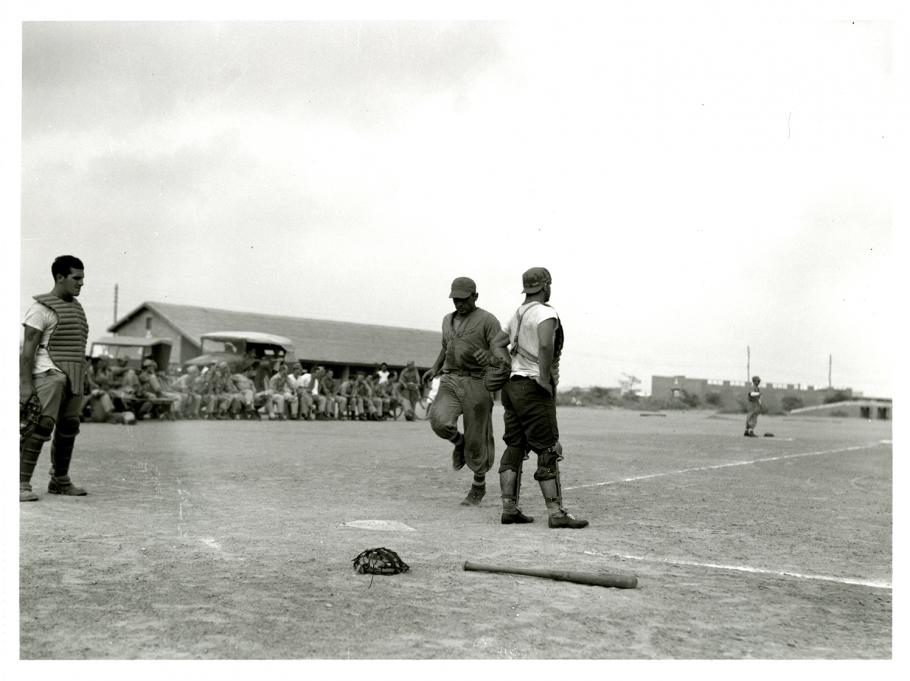It’s that time of year again! The crack of the bat, the smack of the glove, the roar of the crowd—baseball has returned to our nation’s capital!!! Wherever they have served, American soldiers and aviators have taken the nation’s pastime with them. During World War II, Joseph J. Pace served as the chief of the photographic section of an Army Air Forces Flexible Gunnery Unit stationed at Malir, India (just a few miles outside of what is now Karachi, Pakistan). Pace salvaged photographs and negatives detailing activities at the post, which make up the India-Burma Headquarters Photograph Collection [Pace] in the National Air and Space Museum Archives. One set of images chronicles a baseball game played at the Special Service KAB (Karachi Air Base) Baseball Field, APO #882.
The base at Malir originally had been built by the British as a last line of defense between eastward German armies and westward Japanese armies. General Bernard Montgomery had trained his Eighth Army there. Later on, the Americans took over the base.
In his book Into the Teeth of the Tiger, future National Air and Space Museum Deputy Director Donald S. Lopez described Landhi Field at Malir as “comprised a group of widely separated, low, flat buildings on a sunbaked expanse of sand. The airfield with a control tower and alert shack was about half a mile away. A baseball backstop and a volleyball court marked it as an American base even without the flag in front of the headquarters.”
Aviators would pass through Landhi Field as part of their training. Pace’s job with the photo department was to install gun cameras on every .50 caliber machine gun position on the B-24 and B-25 bombers as they passed through. On a training mission, the bombers would rendezvous with a P-40 aircraft, which would simulate an attack. The gunners would then “fire” a synchronized gun camera, in place of live ammunition. The photo department would then process the film and project it on a target screen to determine whether or not the gunners successfully hit their targets. After training, most aviators were assigned to Gen. Claire L. Chennault’s Fourteenth Air Force. As World War II came to an end, Malir served as a processing area for men returning to America from the China-Burma-India theater and I’m sure there were plenty more baseball games. Currently, the Malir area is home to a Pakistan air force base, where the field game of choice is most likely cricket. Enjoy the 2015 baseball season!!



